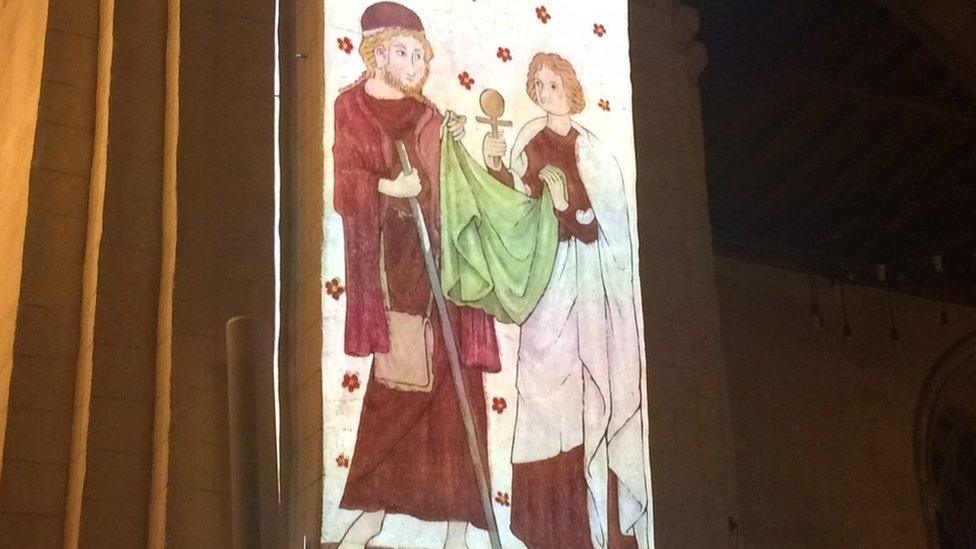Covid: St Albans cathedral's new carving features facemask
- Published
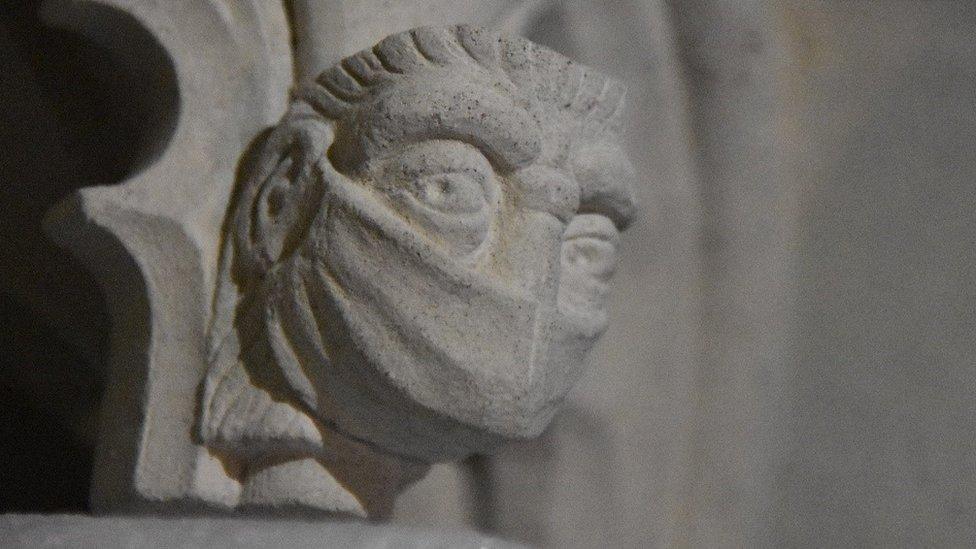
A masked figure has appeared on the shrine to mark the Covid-19 pandemic
The restoration of a rare medieval shrine means a cathedral now features a figure wearing a face-mask.
The shrine of St Amphibalus, at St Albans Cathedral, external in Hertfordshire will be on display when it reopens for visitors on 17 May.
The figure "reminds us the history of St Albans stretches forwards as well as backwards", a cathedral spokesman said.
The work, which took more than a year to complete, was funded by a grant and more than a thousand other donors.
It was due to be unveiled in June last year, but work was delayed due to the pandemic.
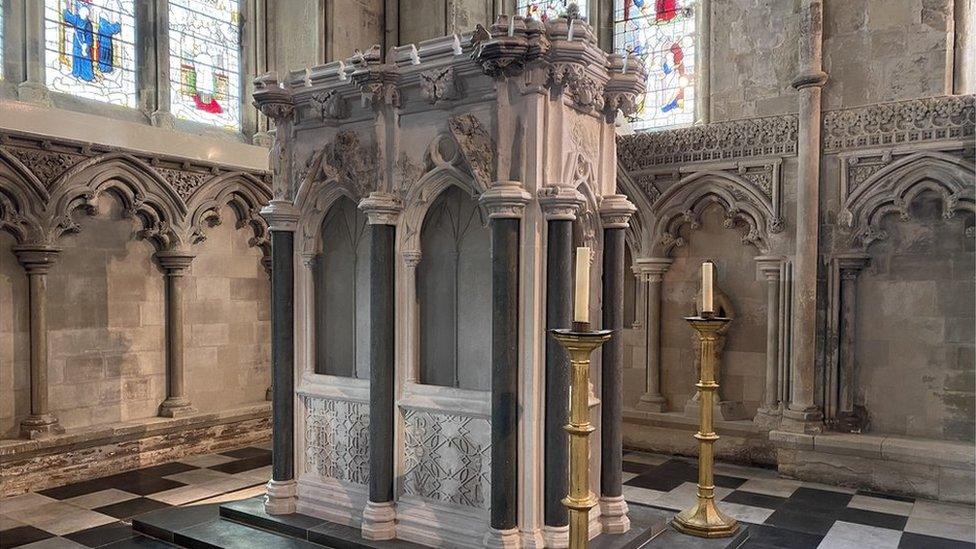
The newly-restored shrine is now located in the Chapel of Our Lady of the Four Tapers
The project, called "Alban, Britain's First Saint", has been funded by the National Lottery Heritage Fund and donations.
Work to conserve and restore the shrine started in June 2019, was put on hold in March last year, and resumed in February.
It is the first time in centuries that the cathedral's two medieval shrines can be appreciated together, fully restored, the diocese said.
The shrine of St Amphibalus is one of Britain's 13 medieval pedestal shrines and St Albans is the only British cathedral to house two.
Dr David Carrington, director of Skillington Workshop, which carried out the work, said: "The preservation of the surviving 14th Century carvings, the setting-out to allow restoration of missing sections and the interpretation and carving of these missing bits in the original spirit and style all presented unique challenges."
Carvers used their imagination and included the new masked figure to commemorate "its reconstruction during the pandemic", the cathedral said.
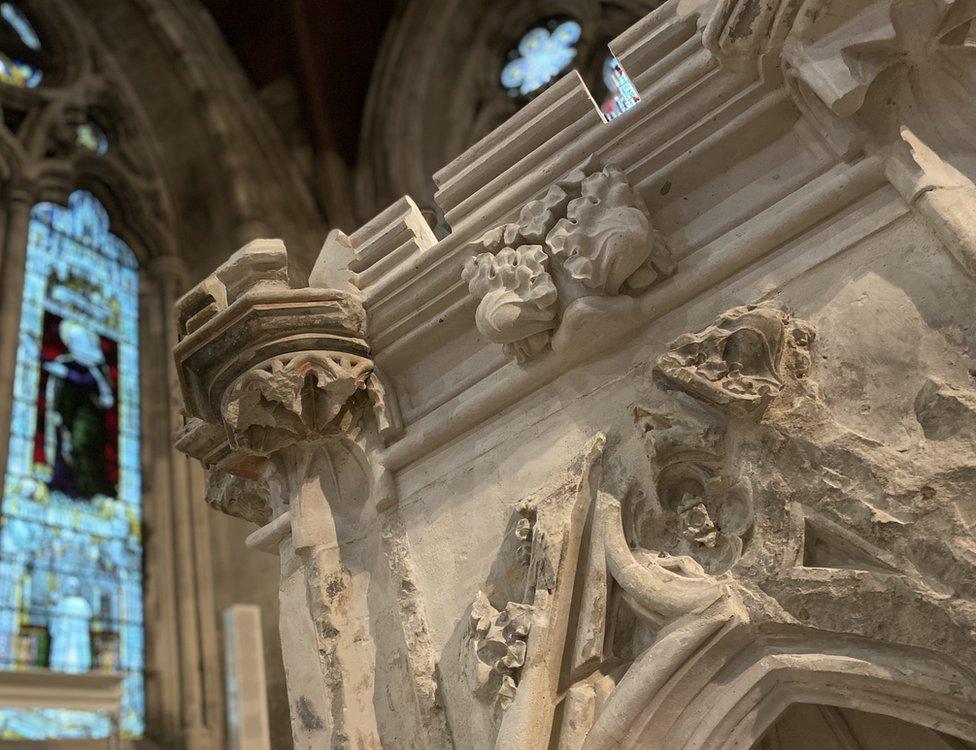
Traditional methods of hand carving were used and two master carvers from Yorkshire worked on new pieces
The Reverend Canon Abi Thompson, Acting Dean of the cathedral, said: "The newly restored Shrine of St Amphibalus creates a fresh focus for prayer, and is a beautiful way to tell part of the story of this extraordinary place to visitors.
"The masked figure reminds us that the history of St Albans stretches forwards as well as backwards, and pilgrims will be able to mark the latest chapter in the history of this cathedral alongside Amphibalus and Alban, who were there at the very beginning."

Alban and Amphibalus
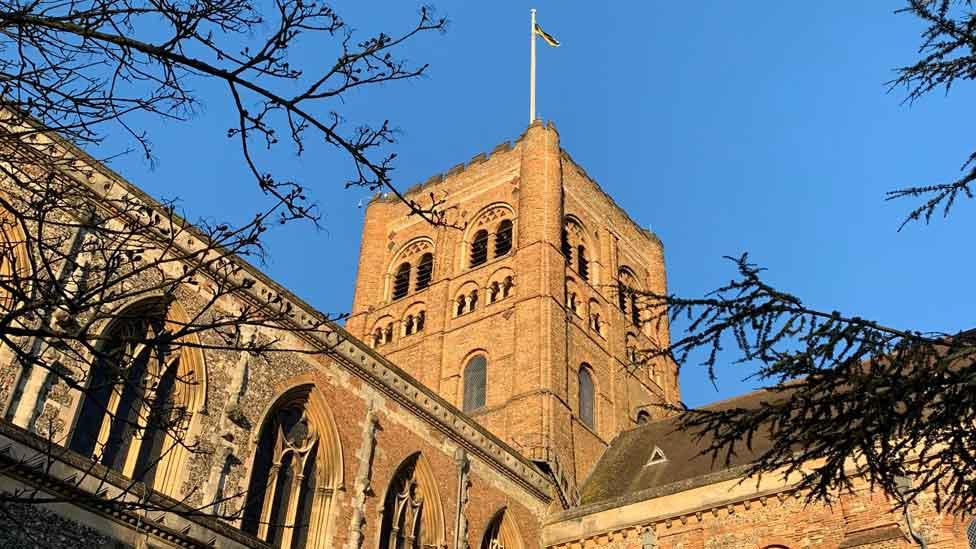
The cathedral is on the site of the execution and burial of St Alban
In the early 3rd Century in the Roman city of Verulamium, Alban gave shelter to Amphibalus, a stranger and Christian priest fleeing persecution
Alban was inspired by how important faith was to the priest and asked to be taught more about Christianity
When the Roman authorities caught up with Amphibalus, Alban exchanged clothes with Amphibalus and was arrested instead, allowing the priest to escape
Alban refused to renounce his new-found beliefs and the magistrate ordered he should receive the punishment intended for the escaped priest
Alban was beheaded on the spot where the cathedral now stands
According to the medieval scribes, Amphibalus was executed and buried at nearby Redbourn where his bones were found in 1177
A shrine was built to hold the remains which were brought back to St Albans in June 1177
Source: St Albans Cathedral

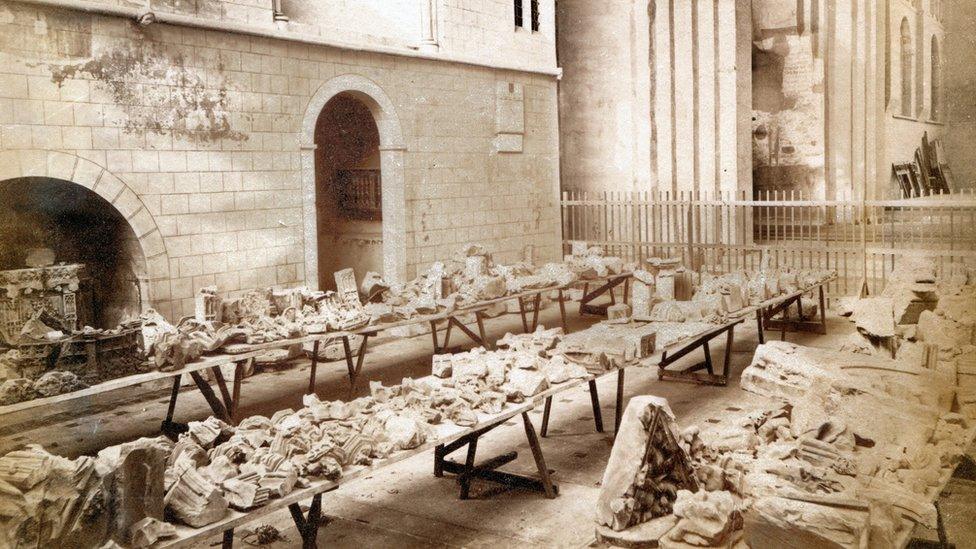
Pieces of the shrine were discovered in the 1870s

Find BBC News: East of England on Facebook, external, Instagram, external and Twitter, external. If you have a story suggestion email eastofenglandnews@bbc.co.uk, external
- Published21 November 2020

- Published4 July 2020

- Published21 June 2020
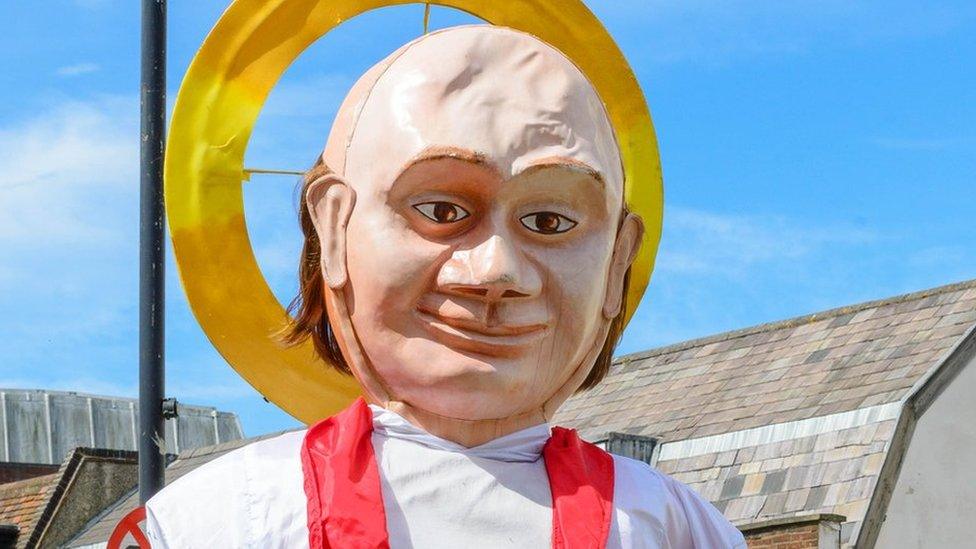
- Published14 June 2020

- Published29 October 2019
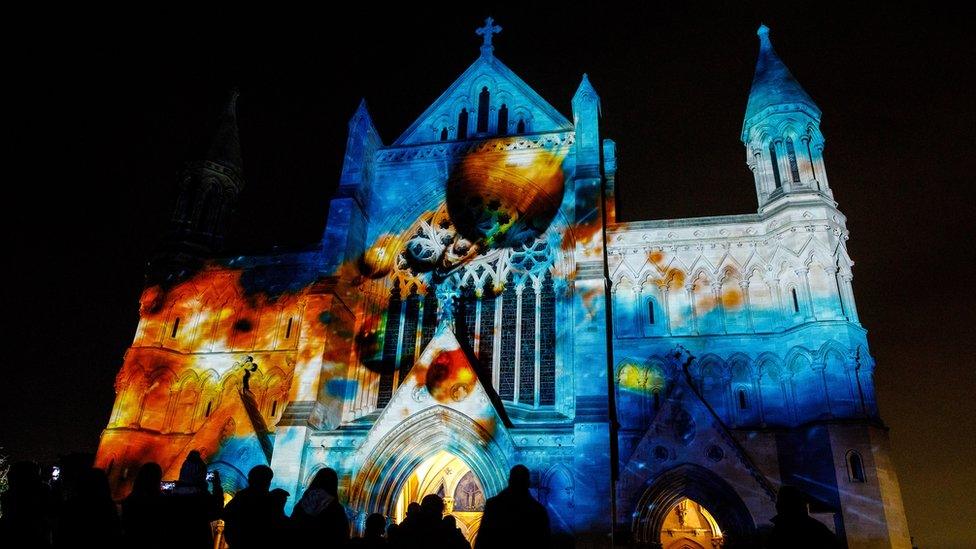
- Published29 September 2019
